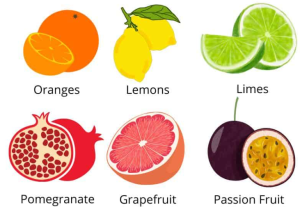DECT is an effective, non-invasive tool for preoperative evaluation of renal calculi, accurately determining stone composition to guide treatment plans.
For uric acid stones, DECT's precise analysis enables non-surgical management through medication that alkalinizes urine and dissolves the calculi.
Dietary modifications include reducing the intake of purine-rich foods such as red meat, shellfish, and certain fish, which can raise uric acid levels.

Increasing the consumption of fruits, vegetables, and high-fiber foods can help lower the risk of uric acid stones.
Adequate hydration is crucial to dilute the urine, preventing the formation of new calculi. Lifestyle changes such as regular physical activity and maintaining a healthy weight can further reduce the risk of calculi recurrence, as obesity is a known risk factor for calculi formation.

Alkaline water, fruit or fruit infused water containing citrate can be recommended to help maintain an optimal pH balance in urine.

By providing precise information on calculi composition, DECT not only aids in selecting the most effective treatment but also in forming comprehensive, preventive strategies for patients, thus improving long-term outcomes.
DECT is a valuable non-invasive tool for analyzing renal calculi composition, particularly for cystine and uric acid stones. It helps avoid unnecessary surgery and facilitates personalized treatment strategies, including dietary and lifestyle modifications.
Future direction Dual-Energy Computed Tomography (DECT) :
Low-Dose DECT Protocols:
Implementing low-dose DECT protocols (dose length product (DLP) of < 200 mGy*cm) has demonstrated high accuracy in distinguishing uric acid from non-uric acid stones and majority of stones as small as 3 mm.
Enhanced Material Decomposition Algorithms:
Iterative DECT image reconstruction algorithms, which utilize either sinogram data or prior CT image information, have demonstrated benefits in reducing noise and artifacts. However, these advantages come at the cost of significant computational demands, extended reconstruction times, and labor-intensive manual tuning of algorithm parameters. To address these challenges, DIRECT-Net was developed —a domain-transformation-based innovative algorithm, end-to-end deep convolutional neural network designed to achieve high-quality DECT material decomposition efficiently by suppressing noise, improving image accuracy, and reducing computation time.
Triple-Energy CT (TECT):
TECT extends DECT capabilities by acquiring data at three energy levels, offering superior material differentiation and classification, which is beneficial for complex stone compositions.
Artificial Intelligence Integration:
The use of a deep-learning (DL) approach was used to generate dual-energy CT (DECT) images from single-energy CT (SECT) scans for accurate kidney stone characterization. Using a p2p-UNet-GAN model, images were processed to simulate different energy levels (80 kVp and 135 kVp) from a single 120 kVp scan. The generated images were evaluated, demonstrating high image quality and reliability. The AI model achieved excellent accuracy in localizing kidney stones and predicting their composition, aligning closely with real patient reports. This approach shows promise in reducing radiation exposure and enhancing diagnostic precision by extracting dual-energy information from standard single-energy CT scans.